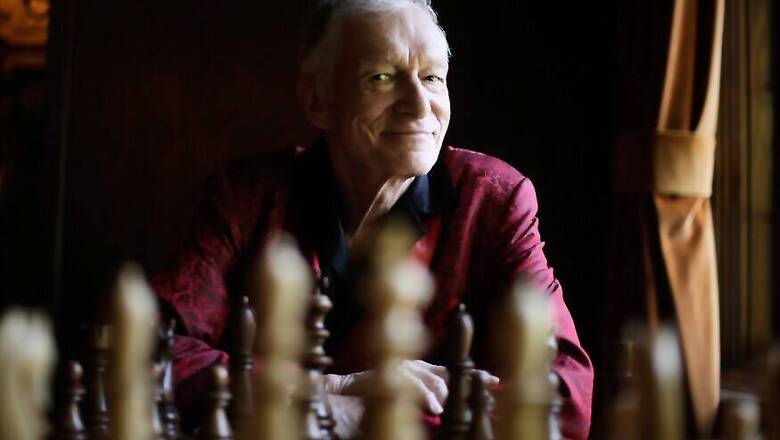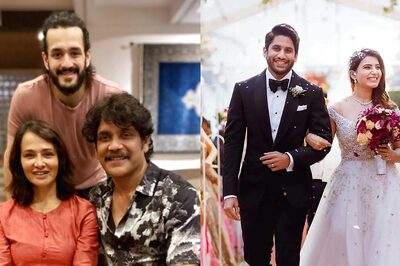
views
I imagine that news of Hugh Hefner dying at the age of 91 must have brought smirks to many faces and provoked a flurry of comments on the apparent benefits of a hedonistic lifestyle. Few people in the world have been as inseparably associated with and influential in promoting sexual and materialistic indulgence as Hefner. Wild romps in the Playboy mansion, stories of silk pyjamas and Viagra intake, photographs of him surrounded by bosomy beauties all contributed to the myth, founded primarily on the pioneering adult magazine which he had put together as a young man on his kitchen table in 1953.
Back in 1991 I edited Debonair widely known and still remembered as being a desi version of Playboy. It was for its time, a glamorous magazine. It had well-known commercial photographers and established models on its covers. Like Playboy, it had a long, freewheeling interview and excellent writing: familiar names in English poetry and fiction today including Cyrus Mistry, Jeet Thayil, Vijay Nambisan and Jerry Pinto all started out writing for the magazine. It had racy jokes, an agony column reeking of sexual angst and a steamy centrespread. So in many ways it was, as was claimed, an Indian version of Playboy. But it did not have a central ingredient, it did not have a Hef.
It was astounding that a magazine like Debonair existed in conservative India and at the same time and for the very same reason, also comprehensible. It was a magazine that had a strong following amongst its readers and yet it was for the most part, covertly consumed. This dichotomy was perhaps reflected in the working culture that had evolved in the magazine till then.
People often asked me what it was like to work at Debonair. And I had to say it was not very different from any other magazine. The alluring covers and centrespreads were shot in photographers’ studios, the latter modelled mostly by unknown lingerie and calendar models. The various departments, art, editorial and marketing went about their jobs as they would have elsewhere.
When I came to Debonair, the magazine was in its eighteenth year having previously been edited by professional writers and editors like Vinod Mehta, Anil Dharker, Dilip Thakore and Adil Jussawalla. Someone once lent me Vinod Mehta’s first book, an account of his youthful misadventures in Mumbai. It was an awkward, sincere book but far more the ramblings of a Debonair reader than a Hefner.
Indeed, it is unlikely that a Hefner could have emerged from the badly paid tribe of Indian journalists. If I have to think of an Indian Hefner, it is liquor magnate Vijay Mallya whose flamboyant public persona as a sybarite with attractive models always in tow appears to be consciously modelled on the Playboy image created by Hefner.
Through his magazine, his nightclubs and his lifestyle Hugh Hefner created a myth of the desirable, available woman that reinforced traditional gender stereotypes. Feminists fought hard against his open and avowed objectification of women. Gloria Steinem even wrote a searing expose as a young reporter working undercover in a Playboy nightclub. Hefner and Bob Guccione founder of Penthouse which was an even raunchier version of Playboy, for their part often portrayed themselves as champions of freedom of expression and sexual liberation. It was their efforts and the legal challenges, they fought, they claimed that had created a freer social environment.
Whatever one makes of these claims they do not in any way diminish the fact of misogyny inherent in the culture that gave rise to Playboy and similar magazines, including Debonair. But they do point to a rather more complicated legacy than one would have expected.
It is not my case that misogyny is dead. And here I am talking about the West which we customarily describe as being more progressive than patriarchal eastern societies. Misogyny is alive and surfaces from time to time in hitherto unknown ways in the media everywhere. But it does seem that in the emerging social order where women have embraced all kinds of means including nudity in surprisingly, empowering ways, the arguments are not so clear anymore.
As far as Hefner goes, the problem of longevity is that you outgrow your time. My first thought when I saw Hugh Hefner’s picture with the news that he had died was how incredibly dated he looked, like a picture on an old, very old advertisement.
(The author is a journalist, social theorist and writer. She tweets at @amritareach. Views are personal)


















Comments
0 comment